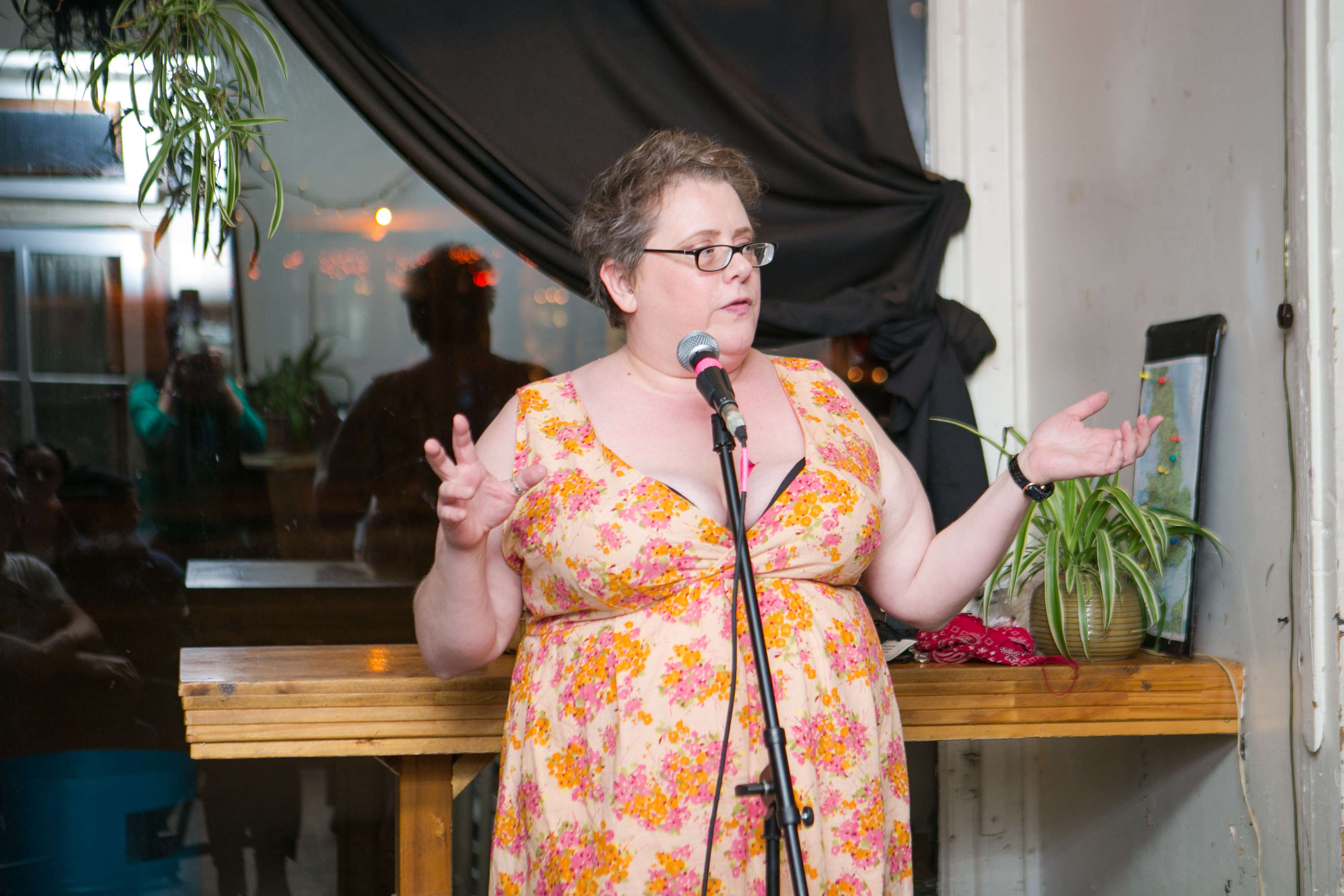LET’S LEAVE THE LIGHTS ON (in my shows)
(This is the second article in an occasional series about Breaking the Fourth Wall in sex-aware performance. Here was the first.)

I can see you! And that’s WONDERFUL.
I don’t always have a choice about lighting with Smut Slam, but when I do, I leave the house lights up, at least a little bit, and keep the stage lights dim. I want the place where the mic stand is to occupy the same psychological space as the audience; I want the audience to feel that, if they felt brave enough, they could be there too. I want them to identify with the slammers, and so the bright stage lights stay off.
Also, I want to be able to see the audience. I want to be able to look right into their eager eyes.
This makes me different from a lot of other performers. I mean, maybe they also would like to be able to see the faces of their audience, but if so, they should say something to the people teching their shows. I’m noticing it anew here in Berlin, at loads of comedy nights in action, but I’ve seen it before, too, that people seem to want to keep the contrast high between the brightly lit stage and the invisible audience in the dark.
Hell, out on the Fringe circuit, I have heard other performers say it, that they’re happy that they can’t see the audience. I hear that, and inside I shake myself and am grateful that I found the right tone of my performance from the beginning, one that brings me face to face to face, as much as possible. I experimented a little with pieces that have considerably less or no eye contact—hello, slut (r)evolution and Desire—but for the most part, I’ve found that making room for eye contact creates the environment that I want for my shows, whether they’re the solo plays or Smut Slams.
I want the audience to really understand that they are in the space with me, that they do not have the protection of darkness to hide in. We have seen what anonymity empowers people to do on the Internet; I don’t want to give any space to that option in my shows. You can be seen, if you are in the audience of a slam. You need to own your own reactions, whatever they may be.
Not only that, but if I am sharing intimate things, I want to know who I’m sharing them with. Certainly people have different levels of comfort with eye contact, but in my shows, the lighting has to at least allow for the occasional possibility. Never mind gauging response; I just want to communicate with them.
I really enjoy it, in my shows, when the lines of non-verbal communication between performer and audience, between teller and listener, are open. And I feel it’s the best way to do justice to the material, and to those of us sharing that material. Sex in theatre and comedy and storytelling tends to get distanced or buffered already; either it’s over the top or it’s got a tinge of shame. Lighting the space so that the topic of sex stays safely on stage does nothing to further sex-aware performance. Or rather, it does nothing that I think we as a culture need more of.
I want the opposite of that. I want to see you. I want you to know that I’m seeing you. It can be awkward as hell, but that is how the best conversations are.
*****
If you think the theatre/performance world needs more critical thinking about including sex and sexuality, you can support my efforts in that arena and become a patron of mine over on Patreon. Your small per-piece pledge will help my work go farther and faster!

